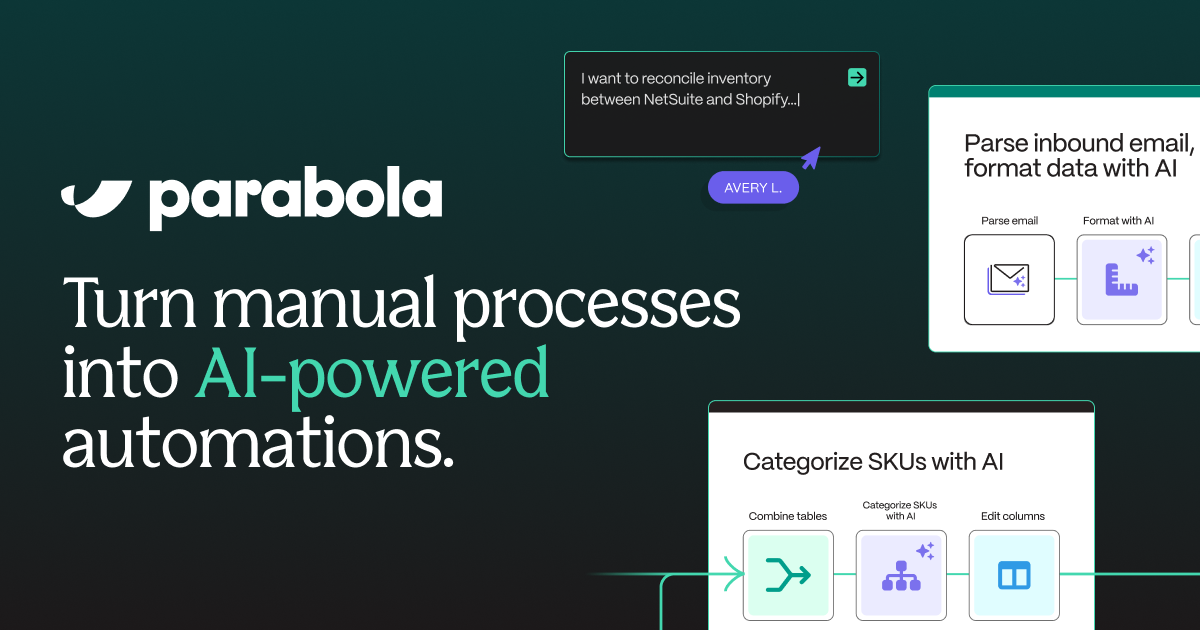Combine NetSuite and Magento Data Using AI – Free Template
Automatically integrate NetSuite and Magento data without writing a single line of code.

Automatically integrate NetSuite and Magento data without writing a single line of code.









By integrating data from both platforms, you can create automated workflows that keep your inventory levels synchronized between your e-commerce store and ERP system. This ensures accurate stock levels and prevents overselling.
Integrating key information from both platforms allows you to automate processes like order fulfillment, revenue recognition, and financial reporting, helping you streamline your business operations.
Using Parabola's data visualization capabilities, you can create comprehensive reports and dashboards that showcase insights from your integrated platforms. These reports can be used to inform business decisions, track performance, and communicate with stakeholders.








Request a demo and see how Parabola can automate
your most manual SOPs.